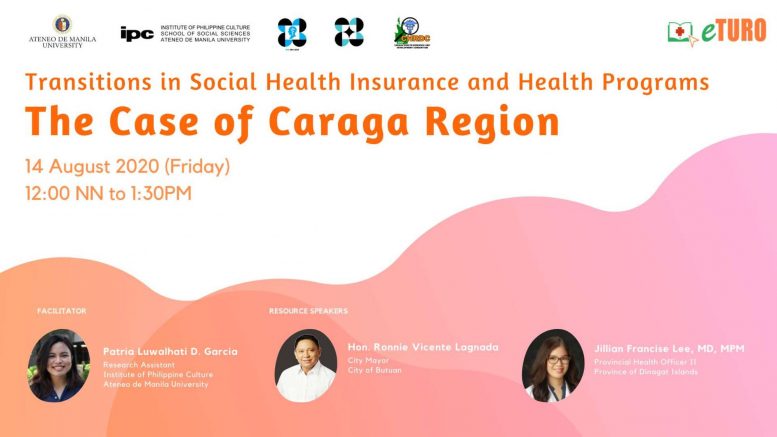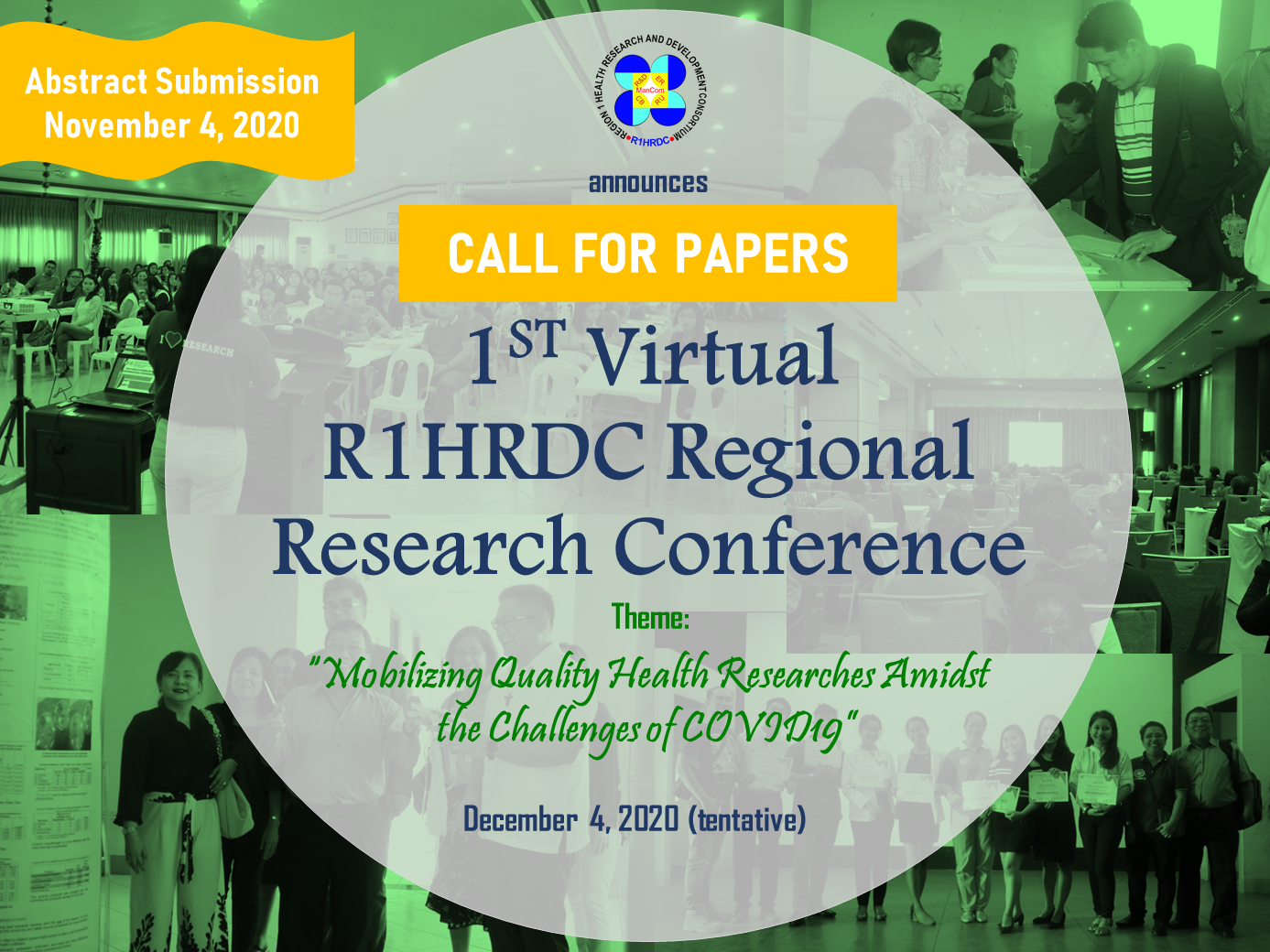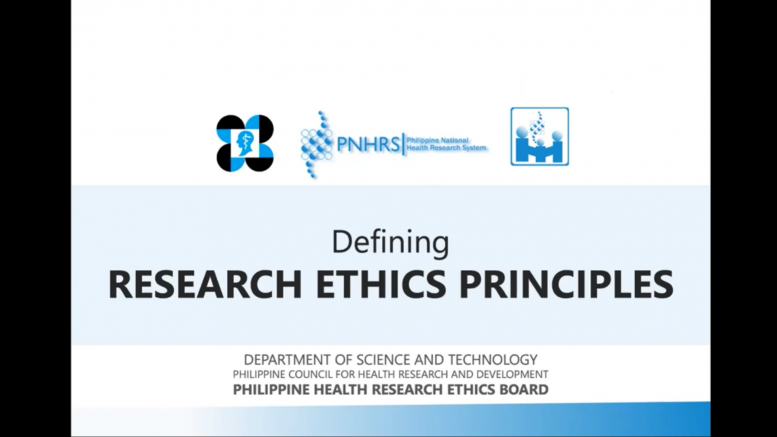The Metro Manila Health Research and Development Consortium (MMHRDC) is now accepting health research proposals for funding for its April 2021 Call for Proposals. The grant is open to Junior Researchers (i.e. with two (2) or less publications in an ISI journal and four (4) or less publications in a non-ISI journal) who are directly affiliated with MMHRDC Member Institutions. Successful applicants shall receive up to Php 500,000.00 to cover for personnel services and other operating expenses. Thesis projects are not eligible for this funding mechanism.
MMHRDC will only be accepting proposals with the following:
1. With a Project leader/Primary Investigator who has two (2) or less publications in an ISI journal and four (4) or less publications in a non-ISI journal
2. With a Project Leader/Primary Investigator who is directly affiliated to the
implementing institution
4. With a proposed budget not exceeding Php 500,000
5. with a proposed project duration not exceeding 12 months
* Please take note that we will only be accepting proposals coming from MMHRDC Member Institutions.
For those who are interested to apply, kindly e-mail the following requirements to This email address is being protected from spambots. You need JavaScript enabled to view it.
2. Counterpart Funding of Implementing Agency
3. Letter of Intent to apply for necessary clearance/permits (e.g. PHREB-accredited Research Ethics Committee, BAI Animal Research Permit, Biosafety Clearance, NCIP, etc.)
4. Official endorsement of agency head
5. CVs of Principal Investigator, Co-Investigator and other senior researchers
Note: Please include the following in the CV
1. List of Researches (Completed and Ongoing)
> Title of Research
> Role in the research (PI,Co-PI,ect)
> Start of Implementation to Date of Completion
2. List of Publications
> Article Title
> Journal title
> Volume
> Issue number
6. Duties and responsibilities of project personnel
8. Copy of tools to be used in the research project
9. Declaration of No Conflict of Interest
Deadline for submission is on April 30, 2021.
The eHealth Training on Unified Resources Online (eTURO) project initiated by the Institute of Philippine Culture – Ateneo de Manila University and DOST – Philippine Council for Health Research and Development (DOST – PCHRD) has been providing online discussions on, “Sustaining the Conversation on COVID-19: How Do We Cope? The eTURO Webinar Series on Engaging Communities and Networks” or “WE CaN!!”. We CaN!! has been offering series of webinars to continually provide updated and accurate COVID-19 information, at the same time highlighting individual and institutional responses to help address the crisis.

In collaboration with the Department of Science and Technology Caraga, the Caraga region was featured in an eTURO episode discussing transitions in Social Health Insurance and Health Programs last 14 August 2020, facilitated by Ms. Patria Luwalhati D. Garcia, research assistant of IPC – Ateneo de Manila University. The discussion highlighted the challenges being faced by the Province of Dinagat Islands and Butuan City in regards to implementation of the Universal health Care in this time of pandemic and the measures being taken to overcome those challenges.
Dr. Jillian Francis Lee, Provincial Health Officer II of the Province of Dinagat Islands, presented in detail the problems that they encountered. She gave emphasis on the their lack of access to referral centers outside of the province, overburdened health resources, poor supply chain management, health service delivery limitations, misalignment of national guidelines to the actual situation in the locality, and the impact on social determinants of health. On the concerns of the implementation of UHC in the province, Dr. Lee also cited that there is a continuing dependence on local governance for public health interventions; poorer and smaller LGUs are also of disadvantage considering the fewer-to-none health providers and less funding for facilities catering to smaller patient populations; focus on mechanisms providing individual based or curative services; and the insurance not being necessarily the best mechanism for financing preventive care and public health measures. Despite the issues brought by the pandemic, the province still successfully practiced preventive and containment measures with interventions from multiple sectors, giving them zero cases up until this day.
Mayor Ronnie Vicente Lagnada of Butuan City, also discussed the problems encountered and the measures taken with regards to COVID-19 in Butuan City. Mayor Lagnada pointed out that the City’s initial plans on UHC implementation was the organizational rationalization, highlighting City Health Office (CHO) as the primary health institute for promotive, preventative, and curative care; and Butuan Medical Center (BMC) as the specialty/therapeutic care. Part of the plan was also integrating primary health care units with smart technologies and institutionalized access to health experts. This includes continuing medical education with experts, and access to established best practices.
Like most of the other LGUs, the plans for Butuan City were challenged by the COVID-19 pandemic. Mayor Lagnada emphasized that the pandemic disrupted the playbook and delayed the programmed projects for the city. But, despite COVID -19 being a derailer, the pandemic also enabled organizational units of Butuan City to work together and taught valuable lessons on organizational dynamics. LGU Butuan City have responded to the war by strengthening the BMC Infectious Ward, establishing the City’s first molecular laboratory for COVID-19 screening, and observing health protocols set by the Inter-Agency Task Force on Emerging Infectious Diseases (IATF-EID).
Since 2019, eTURO has been co-producing webinars on various topics such as social health insurance, LGU scorecard on health, and the universal health care act. Last February 13 and March 13, the project has been hosting webinars covering emerging COVID-19 issues and concerns. Joined by speakers from the infectious disease research community, public health managers, and institutional leaders who are working on the COVID-19 issue.
Visit http://ipc-ateneo.org/ for more WE CaN!! webinars.



